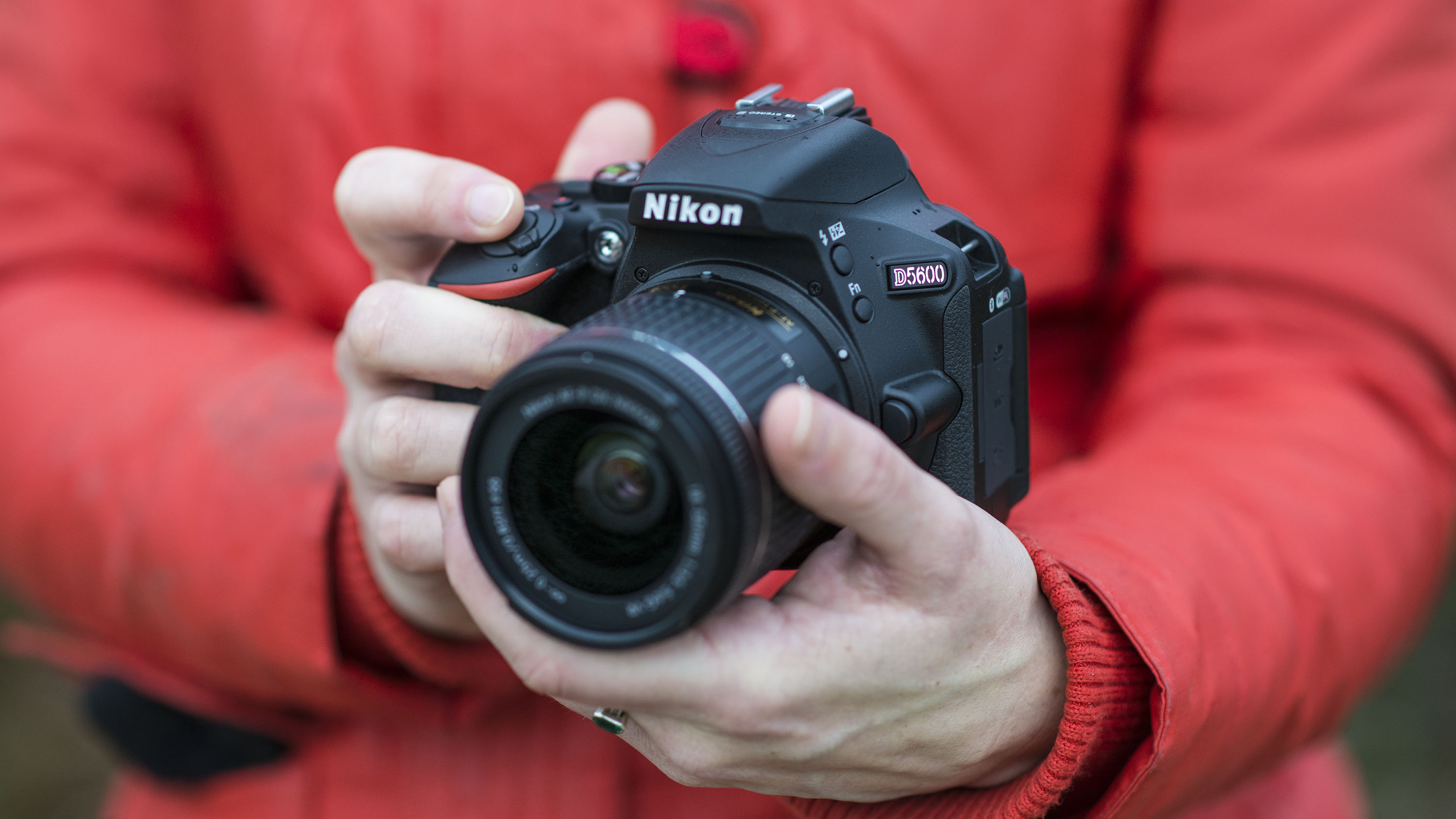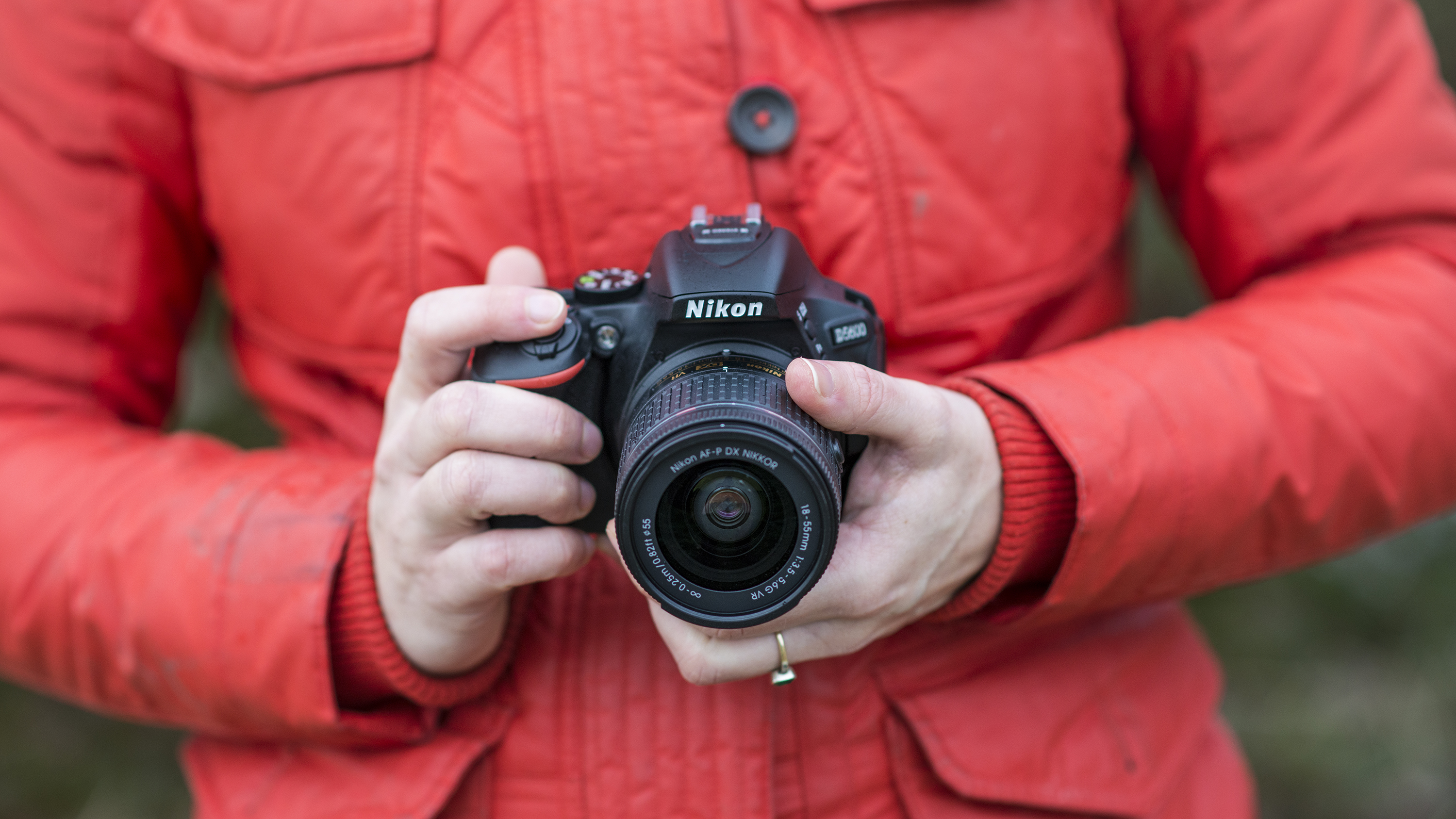TechRadar Verdict
Despite its ages, the D5600 is still a very capable advanced entry-level DSLR. This is a camera which is very much a sum of its parts rather than having one single standout feature. There's a high-resolution 24.2MP sensor which produces very detailed images, an articulating touchscreen, a decent 39-point AF system and polished handling are some of the highlights that make the D5600 one of the most well-rounded entry-level DSLRs available.
Pros
- +
Excellent image quality
- +
Comfy handgrip
- +
Decent AF system
- +
Touchscreen interface
Cons
- -
SnapBridge needs work
- -
Only 1080p video
- -
Pricey compared to rivals
Why you can trust TechRadar
Nikon’s entry-level DSLRs can be split into two groups: the D3xxx series, epitomised by the excellent D3500, offering a very affordable way into DSLR photography; and the D5xxx range of DSLRs designed for those looking for a few more features and greater creative control.
The D5600 is the most recent camera in this latter series, but it's far from new, being introduced to the market in 2016. Still, if you don't crave the latest technology, but instead are happy with a bit of a bargain, you can pick it up for a very reasonable price. It replaced the Nikon D5500, but that's pretty hard to track down now.
The D5600 was a bit of a modest upgrade compared to its predecessor, with the big news at the time being the inclusion of Nikon's SnapBridge technology, facilitating easy and automatic transfer of images directly from the camera to your smart device.
With a range of beginner-friendly features, and excellent image quality, we think the Nikon D5600 is one of the best DSLR cameras you can buy, as well as one of the best cheap cameras currently available.
Features
- Excellent APS-C CMOS sensor with a 24.2MP resolution
- Nice and large 3.2-inch, vari-angle touchscreen
- Only 1080p video capture
Sensor: 24.2MP APS-C CMOS
Lens mount: Nikon F-mount
Screen: 3.2-inch vari-angle touchscreen, 1,037,000 dots
Burst shooting: 5fps
Autofocus: 39-point AF
Video: Full HD 1080p
Connectivity: Wi-Fi, NFC and Bluetooth
Battery life: 820 shots
Weight: 465g
As far as features go, the specs for the D5600 are pretty much identical to those of the D5500. Resolution remains the same at a decent 24.2MP, with the APS-C-sized CMOS sensor again shunning an optical low pass filter in the quest to pull out even more detail from the data recorded.
The D5600 also uses the same EXPEED 4 image processor, with a native sensitivity range running from ISO100 to 25,600 meaning it should be quite comfortable shooting in a range of lighting conditions.
The optical viewfinder provides coverage of 95% of the frame (pretty standard on a entry-level DSLR), so for some key shots you may want to double-check the composition on the rear display to ensure that nothing unwanted has crept into the extreme edges of the frame.
Speaking of the display, there’s the same 3.2-inch vari-angle touchscreen display with a 1,037,000-dot resolution, although its operation has been improved. It now offers the frame-advance bar we’ve seen on both the D5 and D500 to speed up toggling through images, as well as a crop function for use during playback.
As far as features go, the specs for the D5600 are pretty much identical to those of the D5500
Another addition to the D5600 over the D5500 is Nikon’s timelapse movie function, as featured on models higher up the Nikon range. This allows for timelapse movies to be captured and put together entirely in-camera, with an exposure smoothing function helping to even-out variations in lighting as your sequence is captured.
While 4K video is pretty much a standard specification in 2021, when the D5600 was introduced it was often reserved for more premium offerings. As such, you won't find it here, with Nikon sticking to 1080p capture. You get a choice of 60p, 50p, 30p, 25p and 24p frame rates so unless you're a hardened film-maker, there's probably plenty here to be going on with. You can even use a dedicated microphone if you wish, with a dedicated 2.5mm port on the side of the camera.



As we’ve touched on, the most pronounced difference between the D5500 and D5600 is the inclusion of Nikon’s SnapBridge connectivity. While the D5500 featured Wi-Fi and NFC for image transfer, SnapBridge creates a constant connection between the camera and your smart device, once you’ve downloaded the free SnapBridge app and the initial setup’s been completed.
Using a low-energy Bluetooth connection, batches of images – or rather 2MP JPEG versions to be precise – can be automatically transferred from the D5600 to your device, or you can select individual images to transfer at full size, though again this is JPEG-only.
To make the most of the camera's 24MP sensor, you'll want to think about investing in extra lenses down the line
SnapBridge can also be used to transfer movies wirelessly, and for the remote capture of still images – in these cases Wi-Fi is used rather than Bluetooth.
The D5600 can be purchased body-only, but will more than likely be bought with the bundled AF-P DX 18-55mm f/3.5-5.6G VR lens (there’s a non-VR version as well, but for a few dollars or pounds more it’s definitely worth the extra outlay for a lens with anti-shake technology).
The lens is nice and compact, as well as offering Nikon's new silent AF and up to four stops of image stabilisation. It's more than up to the job of getting you started, and fine for general photography, although to make the most of the camera's 24MP sensor, you'll want to think about investing in extra lenses down the line.
Phil Hall is an experienced writer and editor having worked on some of the largest photography magazines in the UK, and now edit the photography channel of TechRadar, the UK's biggest tech website and one of the largest in the world. He has also worked on numerous commercial projects, including working with manufacturers like Nikon and Fujifilm on bespoke printed and online camera guides, as well as writing technique blogs and copy for the John Lewis Technology guide.

